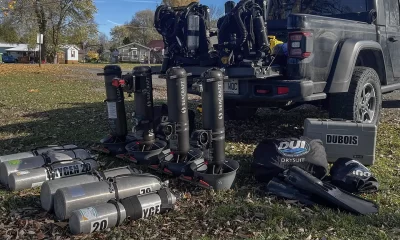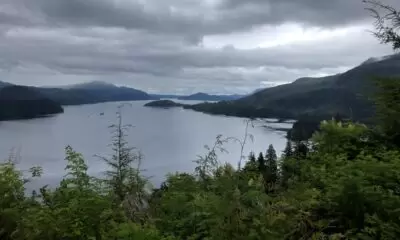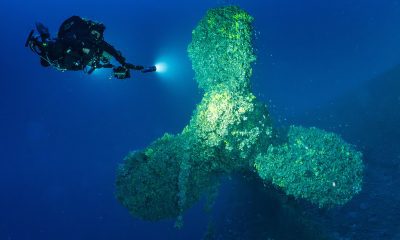
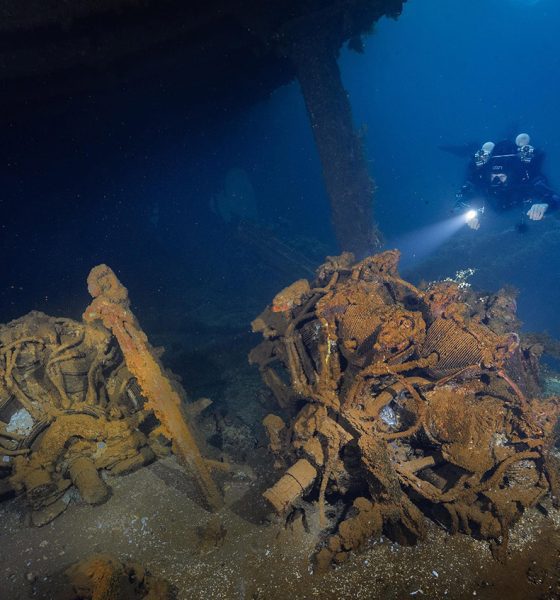
Latest Features
Keep on Chuukin’
Instructor evaluator Guy Shockey recounts their recent three-week expedition to Chuuk Lagoon, having visited the island more than a decade earlier. What a difference a rebreather makes—forget those $4000 gas bills! Shockey dives into the details of their dives, finds, and the current state of Chuuk’s shipwrecks, which are slowly deteriorating. Check out their cool vid. If you’re thinking about heading to Chuuk anytime soon, you’ll want to dive in.
By Guy Shockey. Lede image: ircraft engines in the hold of the Sankisan Maru at 18 m (60 ft). Photo by Katherine Livins
In 2010, a small group of Global Underwater explorer (GUE) divers traveled to Chuuk, Micronesia, to spend nearly two weeks documenting some of the most amazing wreck diving in the world. We came back with 20 hours of HD video footage and photos, and I wrote an article for GUE’s membership magazine Quest about our trip. Fast forward to 2023, and two groups of divers again traveled to Chuuk on a three-week expedition organized by Fathom Dive Systems CEO Charlie Roberson and Fathom Expeditions. Revisiting Chuuk in 2023 was an amazing adventure and while the location was the same, the experience was quite different!

Background
Chuuk (then called Truk) had been a significant roadblock in the WWII Allied advance north through the Central Pacific, as it was a protected anchorage for a significant percentage of Japanese military and merchant shipping. It had been described as “impregnable,” and the decision was made that only Naval air power could remove this base as a threat. “Operation Hailstone” was launched and, for the two days of February 17th and 18th, 1944, Chuuk was the subject of nearly non-stop air strikes that resulted in United States Navy aircraft sinking over 45 vessels of the 60 they found in the lagoon. Air strikes also destroyed about 270 of the nearly 365 aircraft on Chuuk. The result of the operation was that Operation Hailstone effectively rendered the Naval base at Chuuk Atoll no longer a threat.
It wasn’t until 1970, one year after Jacque Cousteau visited Chuuk had produced a film about the diving there, that the rest of the world began to turn their attention to what is basically a mecca for wreck diving enthusiasts. For divers, Chuuk became the largest and most concentrated collection of shipwrecks in the world. The lagoon is a natural harbor that measures about 80 km (43 nautical miles) by 50 km (27 nautical miles) and is surrounded by a protective reef that is nearly 225 km ( 140 miles) in length. The waters are seldom deeper than 60 m/200 ft within the lagoon, and there are several islands that provide shelter from the prevailing winds. In short, if you could design the perfect location for wreck diving, you would likely build something like Chuuk atoll!
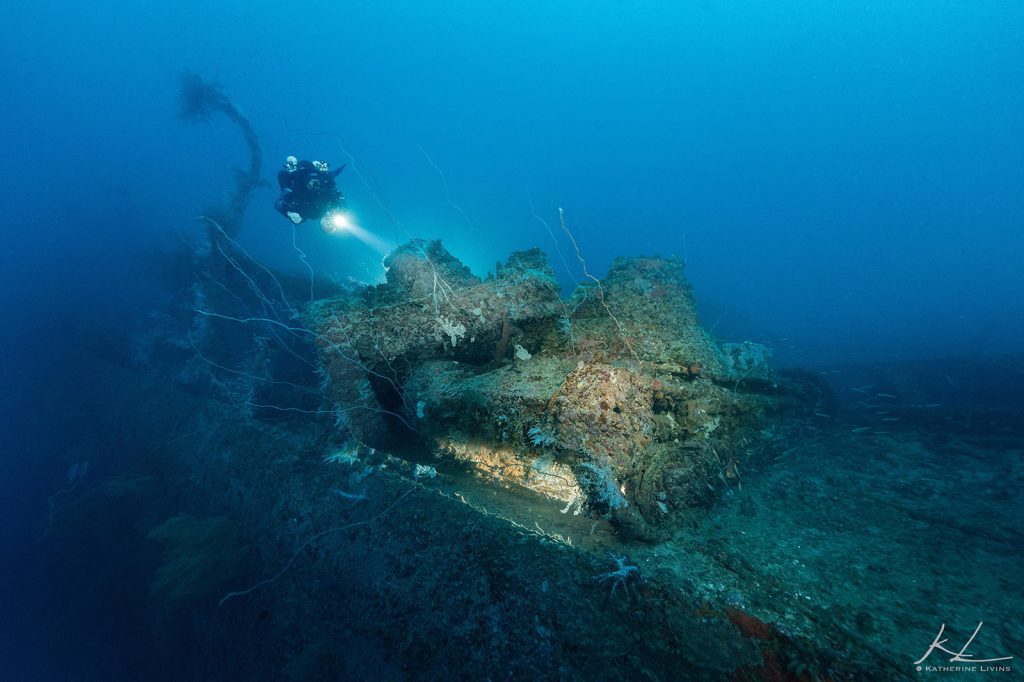
The more things change, the more they stay the same…
Getting to Chuuk is always an adventure. There is the classic Micronesian “circular milk run” that stops at a series of islands on the way to Chuuk if you are coming from one direction, or you will be flying to Chuuk via Guam if you are coming the other direction. Let’s just say, you may not want to set your watch by the flight schedules and, sometimes, you may not even want to use a calendar. The airport in Chuuk will also likely be a new experience for you. My recommendation is you just move to the side of the room where you will gather your luggage and have patience. There is such a thing as “island time,” and it is alive and well on Chuuk! You aren’t arriving at JFK or Atlanta: most things are managed manually here, and it all takes time. The Chuukese people love their families, and arrivals and departures are clearly family affairs. Just roll with it, and you will get where you want to go, more-or-less on time.
This was my first experience in 2010, and nothing had changed in 13 years. Flights were delayed or canceled for several people: luggage was misplaced (all of mine made it on time this time!), and just about everyone in the airport(s) seemed to have a “challenged” degree of situation awareness. One of the things I remembered from my 2010 trip was that it was emotionally rewarding to see the connections that families have in Chuuk, and this hasn’t changed.
On both trips, our groups stayed at the Blue Lagoon resort, and they supplied our boats and pumped our gas. Kimiuo Aisek is the father of wreck diving on Chuuk, and he also founded the Blue Lagoon resort and dive shop. Kimiuo passed away several years ago, but his family still manages the dive operation and the resort. Kimiuo also watched the actual raids and helped Cousteau with locating many of the wrecks. The accommodation has been updated since I was there last, and the rooms are quite nice. They also now have WIFI in each of the rooms, so guests no longer need to congregate by the front desk to update emails and messages every morning! The food is good with a bigger selection than one might think.
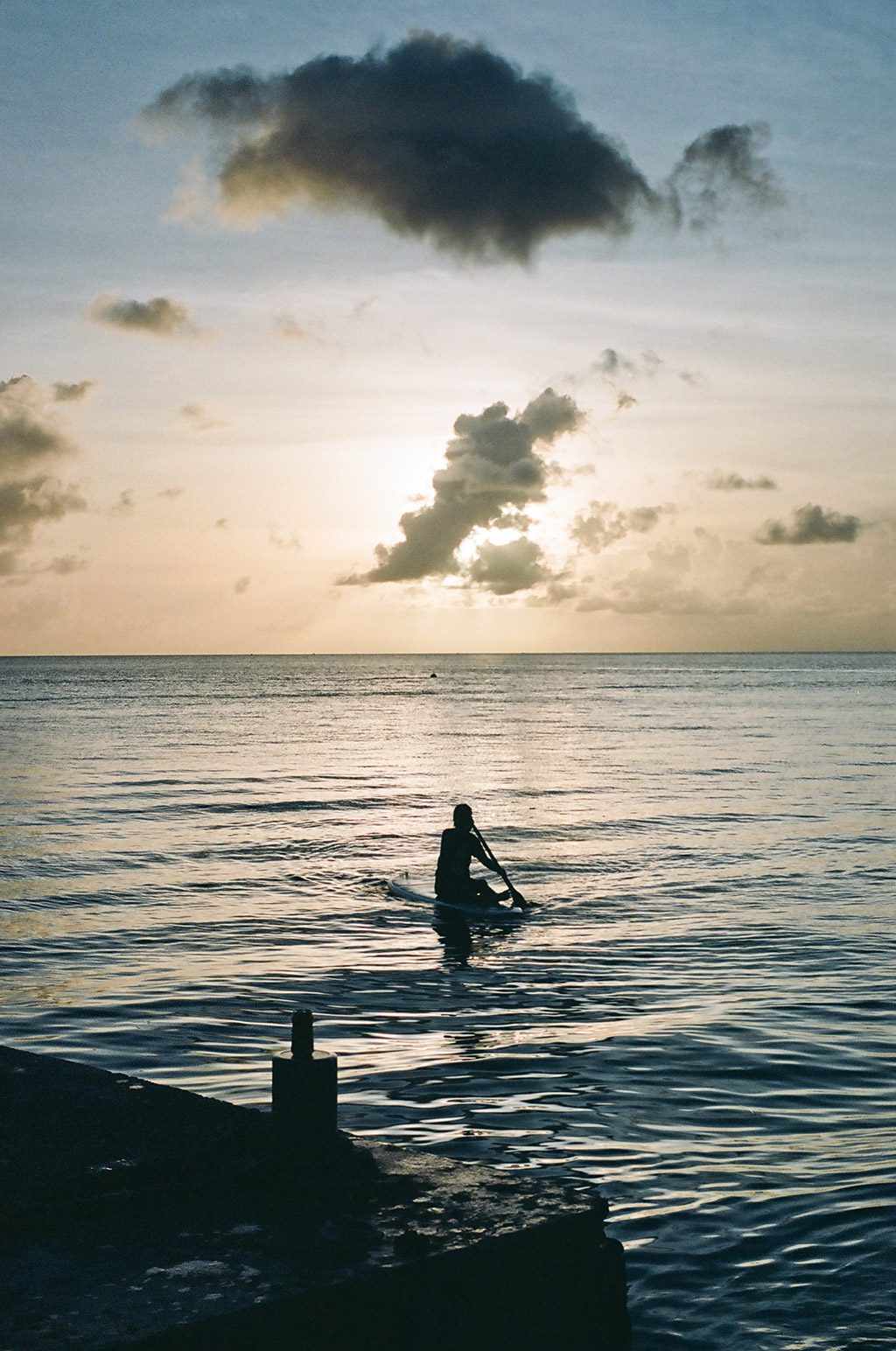
On the 2010 trip, wrecks were located via dead reckoning and that was an amazing thing to see. A divemaster (usually an Aisek family member) would stand in the front of the panga and direct the boat driver with hand signals while referencing landmarks on sometimes distant islands. I remember one time laughing when we were at one of the deeper wrecks farther away from any island and saying, “sure we are here.” Our dive master said, “starboard bow” …, and sure enough, when we got to the bottom, that was exactly where his grapple was hooked. It was amazing to watch this feat of navigation. Forward 13 years and the Blue Lagoon dive masters had tied subsurface floats to all the wrecks, so it was easier (usually) to locate and tie up to the wrecks. The dive masters still needed to locate the float, but the subsurface buoy was usually only 6m/20ft deep and easier to see!
Technology marches forward
The most significant and noticeable change between the 2010 and 2023 trips was the technology used for diving. Our 2010 trip was an open circuit trip, but everyone on the 2023 trip was diving with either the JJ closed circuit rebreather or the Fathom rebreather. I recall a $4000 helium bill on the open circuit trip for a relatively small number of deeper dives. Not only was helium expensive on Chuuk, but helium was also difficult to get at all!
On that trip, the first thing I did on arrival at Blue Lagoon dive shop was march over to the gas blending station and buy all the helium they had! Chuuk is at the end of a long supply line and any logistical considerations require significant forward planning. On the 2023 trip, Charlie Roberson had managed all this from his office in Florida, and we had more than enough Helium, and all our bailout cylinders were waiting for us. We were all diving with back-mounted bail out, and the only thing we needed to bring were Lola valves for our bailout cylinders.
Our 2010 trip to Chuuk was also absent some other newer technology: the amazing instruments created by Shearwater research! Every CCR present on the 2023 trip was connected to a Shearwater controller handset. Every diver also had another piece of Shearwater equipment as a back-up to the controller! Ten years ago, my approach to discussing dive instruments was quite different than that which happens today, and this is mostly because of the work of Shearwater Research. Their instruments are reliable and allow us to make better and more informed decisions during our dives. They are an integral part of most divers’ equipment packages for most divers and show up on more and more CCR manufacturers products. They were incredibly useful in Chuuk where we could update our decompression obligations in real time while we were doing multiple dives a day over three weeks.
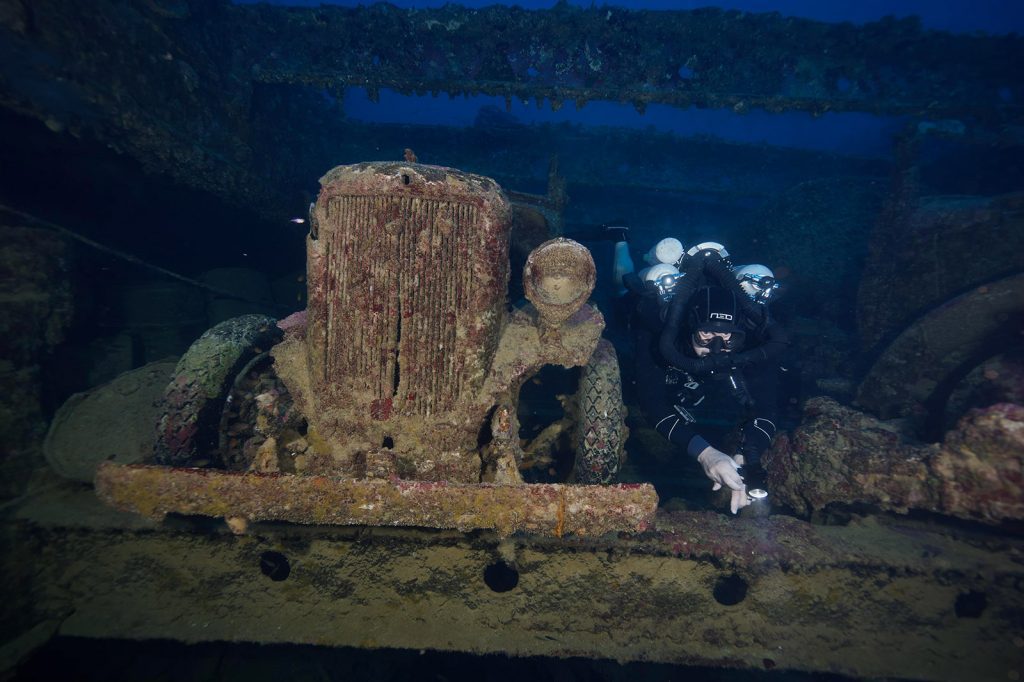
Before you pick up your pen and start writing a “Dear Editor” letter after reading my comment above, please note that I was very specific in my wording where I said they “allow us to make better and more informed decisions.” I didn’t say we should let them make our decisions for us, and there is a very big difference between those two statements. We have had a healthy skepticism of diving computers over the years, and I still am not suggesting we substitute a computer for our brain. However, I use computers every day to assist me in decision making, and it is no different in diving. As long as we recognize that computers can be a “garbage in – garbage out” piece of equipment, and not a silver bullet to solve all our decompression calculation problems, I personally think they can be valuable. They help me monitor my environment, and they were very useful in the type of project diving we were doing in Chuuk.
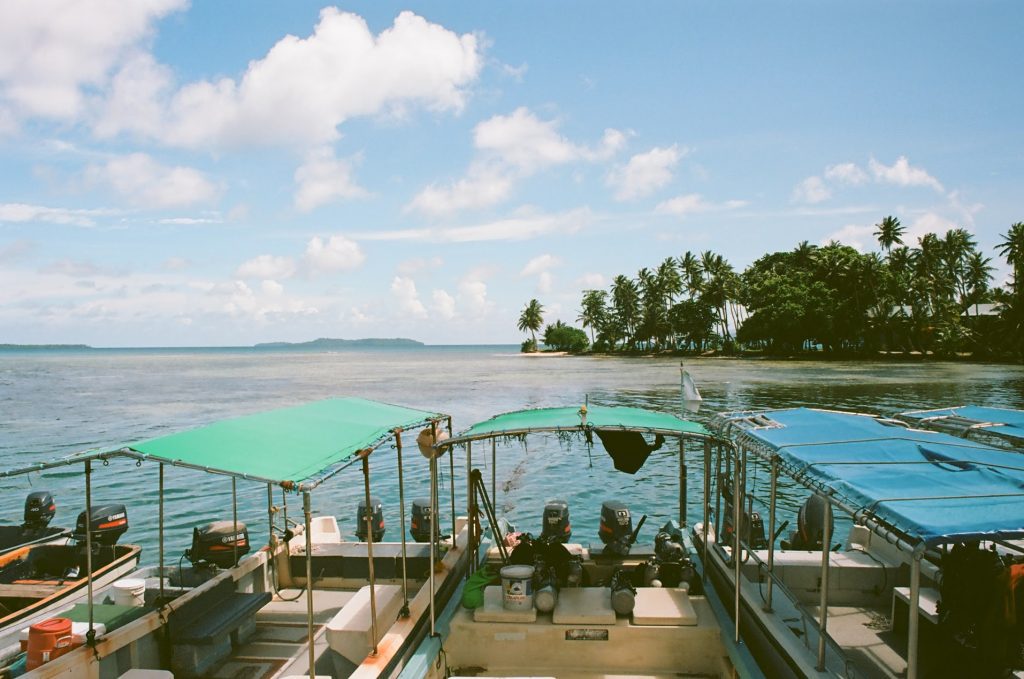
Advantages of diving CCR at Chuuk
To paraphrase a military axiom: “good generals consider tactics and strategy while great generals focus on logistics.” Diving at the end of a long supply line with limited supplies of helium and the associated stress on a fill station trying to keep pace with filling multiple cylinders, many times a day, helps defend that axiom. I don’t know how we could have dived as much as we did on the wrecks we wanted to dive, without diving rebreathers. Gas costs were a small portion of what they were in 2010 and because Charlie had prepositioned C02 absorbent and all the cylinders we needed, the effort on behalf of each diver was relatively low. Most of the time we were able to do two days diving with one bailout gas fill, and because 02 usage on a CCR is independent of depth, it didn’t really matter whether we were doing a deep dive or a shallower dive; our 02 usage was the same.
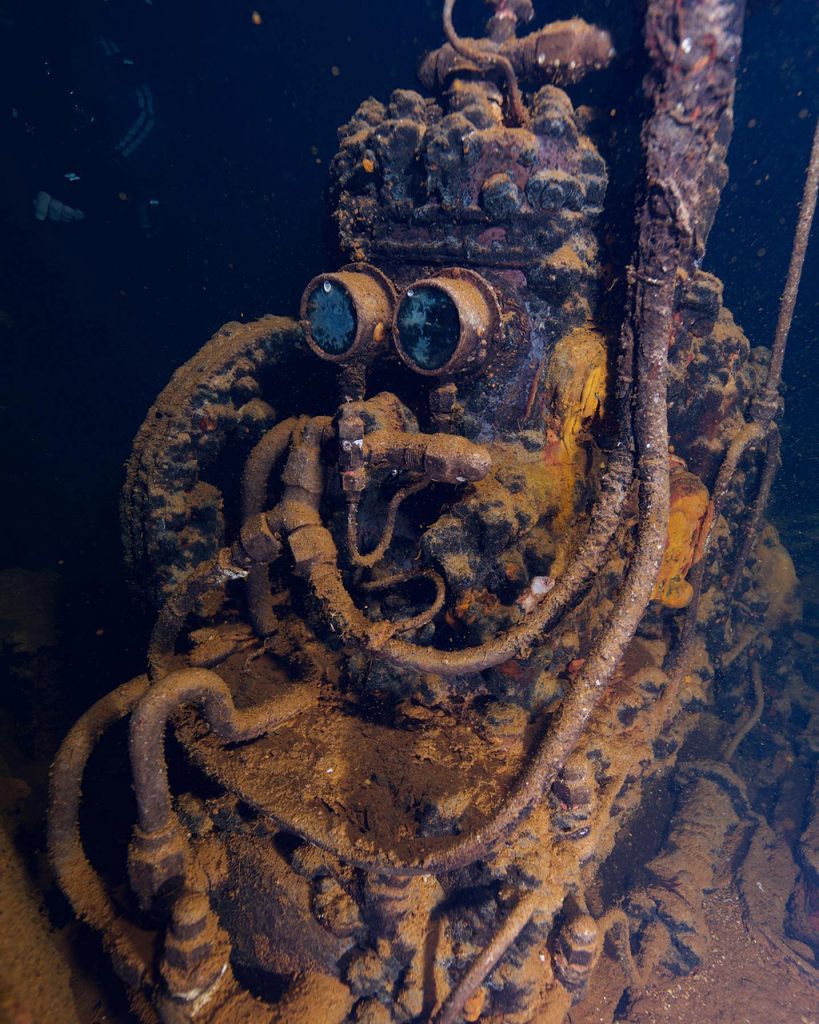
One of the biggest advantages of diving rebreathers in Chuuk was that we were regularly able to dive the deeper wrecks in the lagoon. This was valuable because the deeper wrecks are not dived as often and are in better shape simply because of less traffic. The deeper depth also means less sunlight to promote coral growth resulting in more easily discernible features on things like deck guns, etc., on the wrecks below 100’ (30 m).
Because the water temperature was 85 F (29 C), our bottom time and resultant deco time was limited by how long we wanted to stay on the bottom! Gas supplies were never really a concern, nor was exposure and the all-important “How long can I survive if my drysuit floods in 45-degree water (7 C)” which is a concern here at home in the Pacific Northwest. Our total run time was usually a function of what our plans were for the day and how this would impact the rest of the teams on the same boat.
We normally did a longer and deeper dive in the morning and, then after a four-hour surface interval that included lunch, we chose something shallower in the afternoon. About half-way through each 10-day trip, all divers took a day off just to relax and dry out. There is a recompression chamber on Chuuk, but we were purposefully conservative, and no one from either group had any issues during the entire trip. There is really no reason to not be conservative with regard to decompression times in Chuuk, because you just never know what you are going to see on deco! We were regularly visited by sharks, turtles, and all varieties of fish, and some of the divers even saw eagle rays.
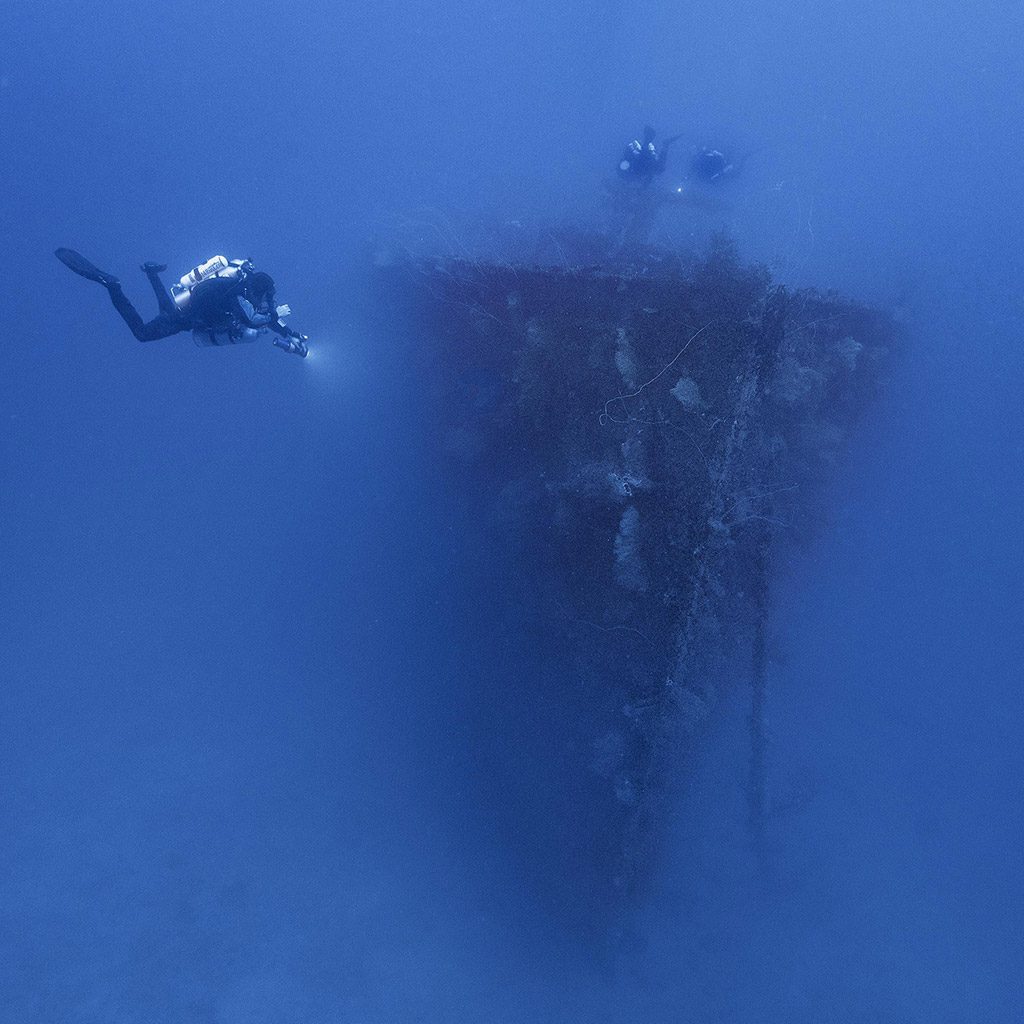
The wrecks of Chuuk
There are about 50 shipwrecks and several aircraft wrecks to dive in Chuuk lagoon. It’s difficult to put this in perspective for someone who hasn’t been there, and it is easy to normalize your diving so that “Oh, another 500 ft (160 m) long wreck” becomes a typical day of the week! However, each wreck has its own character and what is “in or on” each wreck begins to become more important than the wreck name itself. While the wrecks do of course have names, divers start to refer to them as “the wreck with the earth compactor in the hold”, or “the wreck with three tanks sitting on the deck.”
You can’t help but become an amateur historian when you dive wrecks like the ones in Chuuk, because every single wreck has a story. What ports did the ship visit? What was it like to work as crew on each ship? What are the stories of each of the members of the crew who died in the sinkings? Every one of the wrecks is a war grave, and in several cases, this is very apparent. This can be a little disconcerting and uncomfortable at some times, and I suggest a little compassion be added to your dives. Nearly 5000 sailors and airmen lost their lives in this battle and this is still a tragedy regardless of which side anyone is on.
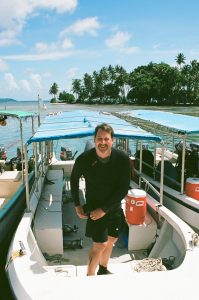
A typical day consisted of diving one of the deeper wrecks in the morning and then a shallower one in the afternoon. This gave all the divers a “tour de force” of the most significant and interesting shipwrecks in Chuuk lagoon, and many divers chose to revisit some of the wrecks because they were just so darn cool! Some of the highlights were the San Francisco Maru, loaded with enough munitions to equip a small army, and the Nippo Maru and the Aikoku Maru, also loaded with interesting things such as field guns, trucks and tractors. You can still see the Zero aircraft in the holds of the Fujikawa Maru, and the Heian Maru is still one of the biggest wrecks divers can dive anywhere in the world.
One of everyone’s favorites was the Imperial Japanese Navy (IJN) destroyer the “Oite”. It was one of the deepest wrecks at about 200 ft (60 m), but it was also amazing. It was a longer boat ride but totally worth it. The destroyer had broken in two pieces after being hit by a torpedo, and it sank with the bow and stern sections within sight of each other. This had been on my “to do” list forever and wasn’t something we could do when I was there on my open circuit trip. This time around, with our rebreathers it was easily doable, and we did…multiple times!
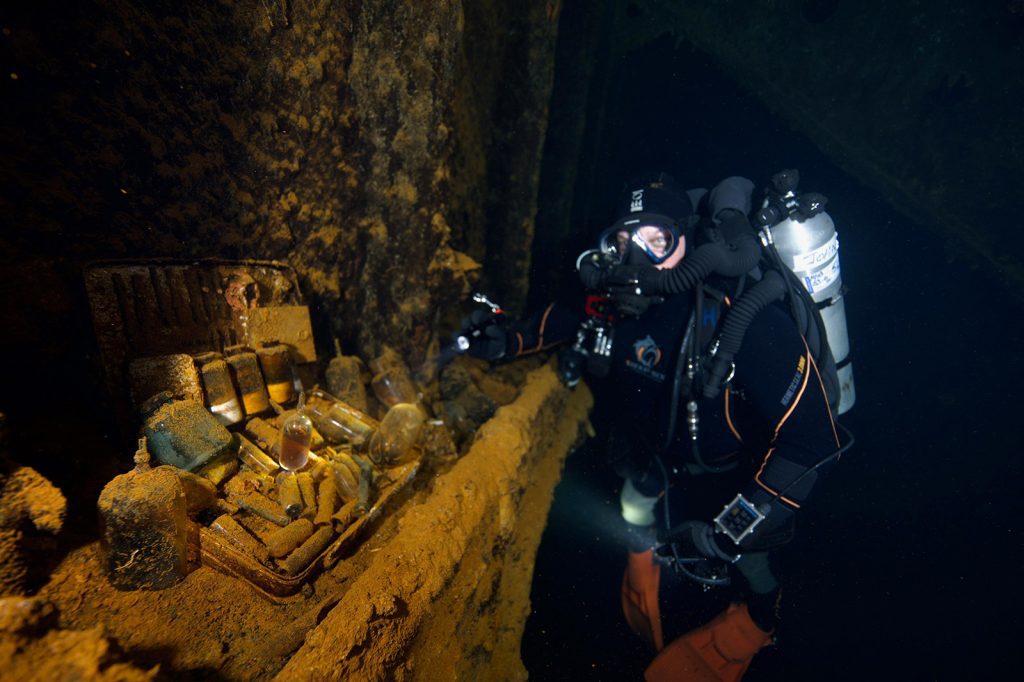
There are also some amazing aircraft wrecks in the lagoon, and we were fortunate to dive one that was only discovered this past spring. It was in excellent condition and the funniest part was that it was only a couple minutes from the dive shop! There are literally hundreds of aircraft scattered throughout the lagoon and just waiting to be discovered. The problem is that because the area is so big, it is unlikely that most of them will ever be found. This newly discovered wreck just happened to be spotted from a boat on the surface on a day of terrific visibility and sits in 80 ft (24 m) of water…
I could clearly see that the wrecks have deteriorated over the last dozen years or so. The super-structures of some wrecks have collapsed into the hulls, and previous entry points are now closed. This is hardly surprising and one of the things that makes wreck diving so interesting: the natural deterioration of wrecks means that every dive can be something new! While some places become closed off, other access points open. Wreck diving is always dynamic, as both the ocean and the wrecks themselves are in a constant state of change. I honestly didn’t find myself thinking, “You should have been here last year because…”, as they are just as much fun to dive as they ever were. The deeper wrecks seem to deteriorate slower and given that we did a lot of diving on these wrecks, I had more fun and spent more time underwater on this trip then I did in 2010.
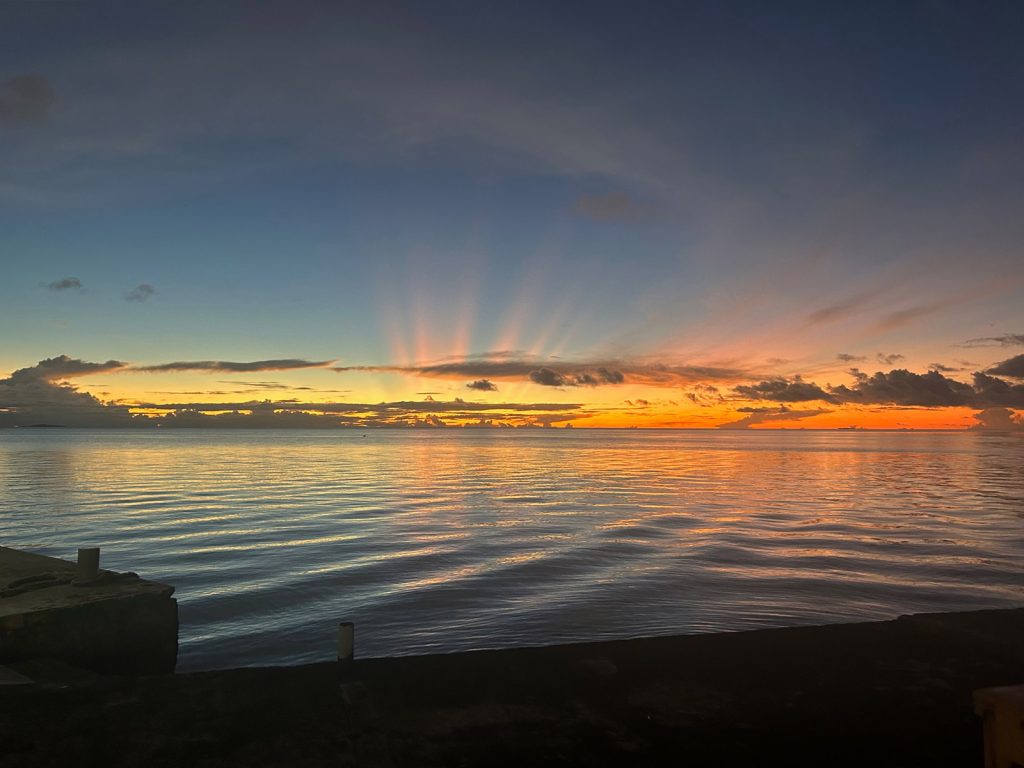
We enjoyed ourselves so much in fact, that we already have plans to go again in July 2024 and July 2025. Charlie Roberson and Fathom Expeditions are again handling the logistics and you can contact him at [email protected]. In addition to Charlie, GUE Instructor, Kelvin Davidson and I will be along as guides, and we are happy to answer any questions you might have about the diving, the accommodation, and the trip itself. Kelvin managed one of the dive resorts on Chuuk for three years before moving to Tulum and starting Third Dimensions Diving and has done nearly 1300 dives on the wrecks in the lagoon. This sort of insider information was invaluable to us when it came to planning dives and even just helping us navigate the culture of the islands. He even knew where the best cakes were made… 🙂 You can reach me at [email protected] and you can reach Kelvin at [email protected].
DIVE DEEPER
InDEPTH: WWII WRECKS – A TOXIC LEGACY? with Matt Carter
InDEPTH: In Memoriam: Martin Cridge by Aron Arngrimsson and Steve Jones
Other stories by Guy Shockey:
InDEPTH: Why It’s Okay To Make Mistakes
InDEPTH: The Economics of Choosing CCR Vs OC
InDEPTH: How to Become an Explorer: Passion, Partnership, and Exploration
InDEPTH: The Flexibility of Standard Operating Procedures
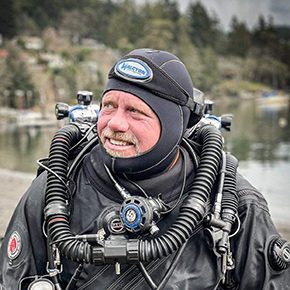
Guy Shockey is a GUE instructor and instructor trainer who is actively involved in mentoring the next generation of GUE divers. He started diving in 1982 in a cold mountain lake in Alberta, Canada. Since then, he has logged somewhere close to 8,000 dives in most of the world’s oceans. He is a passionate technical diver with a particular interest in deeper ocean wreck diving. He is a former military officer and professional hunter with both bachelor’s and master’s degrees in political science. He is also an entrepreneur with several successful startup companies to his credit.






















